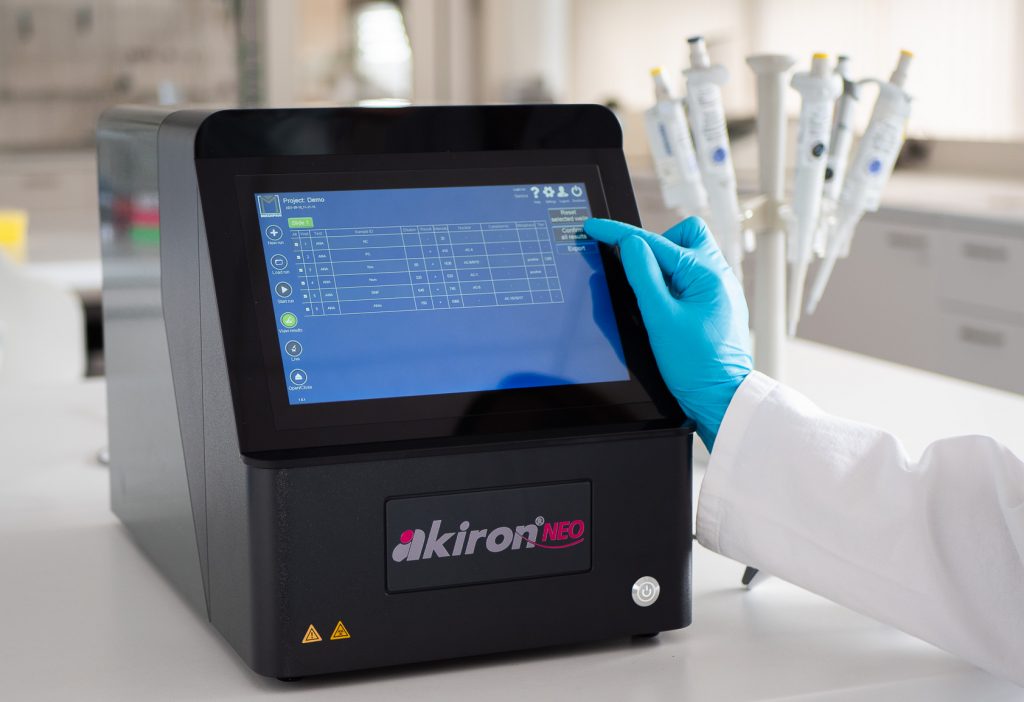
AI in ANA Testing: A New Era in Autoimmune Diagnostics
A German Pilot Study Using AI-Assisted Interpretation of ANA
Artificial intelligence is rapidly transforming medical diagnostics—from radiology to immunology. Now, a new German pilot study reveals how AI-assisted interpretation of ANA tests could lead to faster, more consistent, and more reliable diagnosis of autoimmune diseases. With this study, the University Medical Center Regensburg and Asklepios Medical Center Bad Abbach (Germany) have taken an important step toward modernizing laboratory diagnostics. The research compared AI-assisted interpretation of ANA immunofluorescence tests with the established traditional method of visual reading by experienced specialists.
The results, published in the Journal of Clinical Medicine in September 2025, suggest that artificial intelligence could soon become a reliable partner in routine laboratory workflows, helping to combine efficiency with diagnostic accuracy1.
ANA (antinuclear antibodies) play a crucial role in diagnosing autoimmune diseases such as systemic lupus erythematosus (SLE), making this study highly relevant for both clinicians and patients.
The Challenge of ANA Testing
Antinuclear antibody (ANA) testing is one of the most significant laboratory tools for identifying a wide range of autoimmune disorders. The gold standard is the indirect immunofluorescence assay (IFA) on HEp-2 cells. While this method offers excellent sensitivity, it also comes with challenges: interpretation is time-consuming, requires expertise, and is often influenced by the individual observer’s experience. This can lead to differences in results between laboratories, making standardization difficult.
How Artificial Intelligence Can Help
While artificial intelligence (AI) has already begun to transform many aspects of daily life, its value has also been demonstrated in the fields of radiology2, dermatology3, and pathology4. Now, it is entering the field of immunology, as reported also during the Symposium on Autoantibodies.

The akiron® NEO system, tested in a recent pilot study in Germany, is designed to automatically analyze ANA IFA slides. Using advanced image recognition and machine learning, the system:
- Classifies ANA samples as positive or negative.
- Identifies fluorescence patterns according to the international ICAP ANA pattern classification5.
- Estimates antibody titers with digital precision.
This approach promises faster, more reproducible results and provides valuable support to laboratory specialists.
Key Results from the Pilot Study
In the study, 143 unselected patient samples from routine clinical care were analyzed using both classical visual interpretation and the AI-assisted system. The findings were promising:
- High agreement was found between AI and human experts when distinguishing between positive and negative ANA results.
- Pattern recognition showed moderate to very good concordance, with AI performing particularly well on common patterns.
- While AI tended to report higher titer levels than manual readings, this discrepancy is not expected to impact clinical decision-making. Positive samples are usually retested through reflex procedures.
These results demonstrate that AI can already deliver reliable first-line analyses, even if human confirmation remains essential for complex or borderline cases.
What This Means for Clinical Practice

The integration of AI into ANA testing could transform autoimmune diagnostics. Laboratories would benefit from:
- Greater efficiency thanks to reduced manual workload.
- Improved consistency across different readers and centers.
- Faster screening that allows specialists to focus on challenging cases.
For patients, this could mean shorter waiting times and earlier diagnoses, which are crucial in managing autoimmune conditions effectively.
Looking Ahead
The study concludes that AI will not replace human expertise but will act as a powerful partner in diagnostics. AI systems like akiron® NEO are expected to become valuable tools in routine laboratory workflows. By combining the accuracy of digital technology with the judgment of medical professionals, healthcare moves closer to achieving both standardization and speed in autoimmune diagnostics.
Building on these findings, Medipan & GA Generic Assays have applied the experience gained to further refine the akiron® NEO software, now installed worldwide, to enhance system reliability and diagnostic precision.
References
- Mayr et al., (2025) Pilot Study of AI-Assisted ANA Immunofluorescence Reading—Comparison with Classical Visual Interpretation ↩︎
- Kelly et al., (2022) Radiology artificial intelligence: a systematic review and evaluation of methods (RAISE) ↩︎
- Lalmalani et al., (2025) Artificial intelligence in dermatopathology: a systematic review ↩︎
- Meyer et al., (2022) Impact of artificial intelligence on pathologists’ decisions: an experiment ↩︎
- Official website for the International Consensus on Antinuclear Antibody (ANA) Patterns (ICAP) ↩︎




